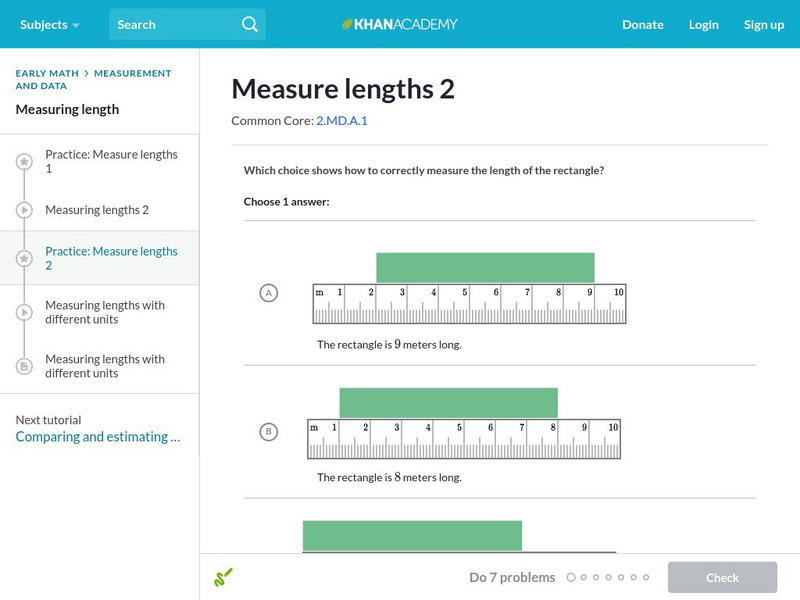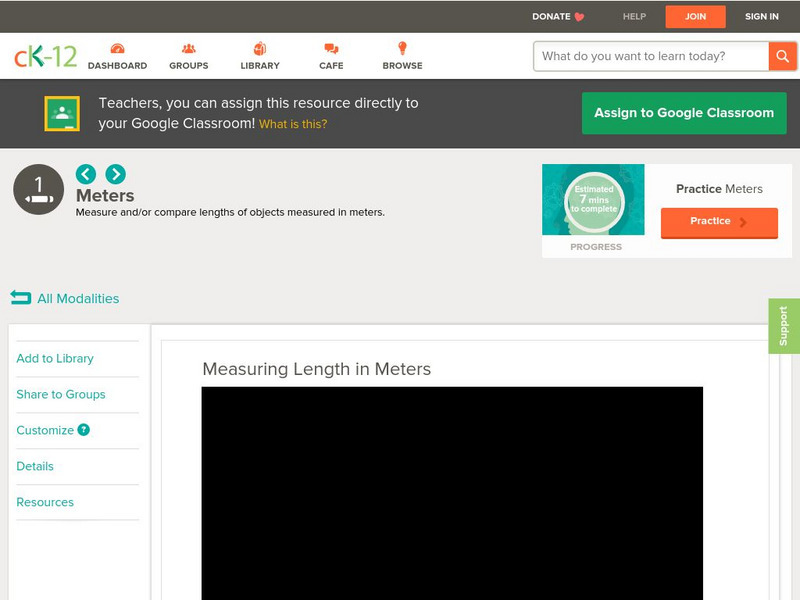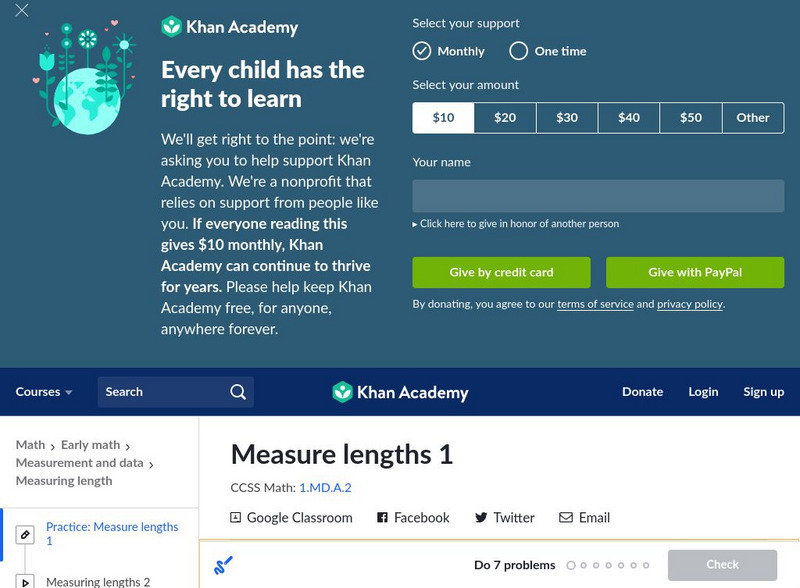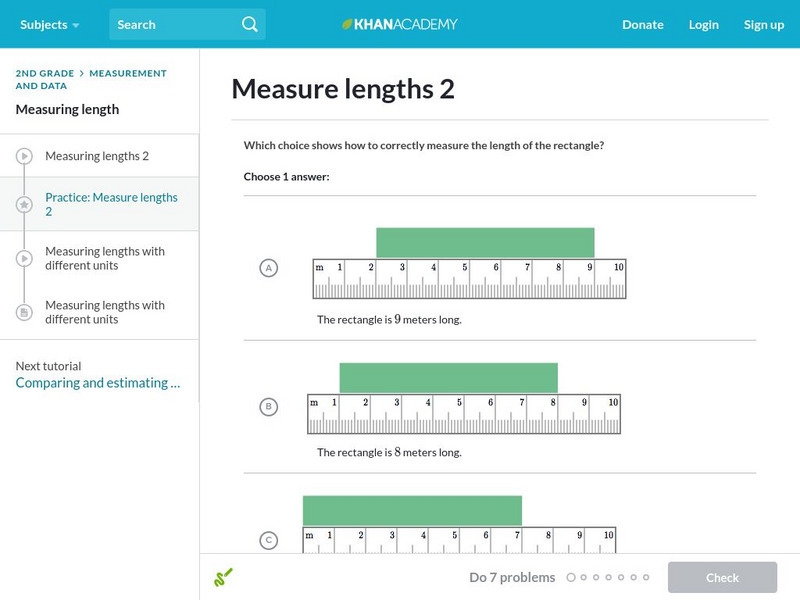Hi, what do you want to do?
Curated OER
What is a Pico?
Young scholars label objects in their classroom based on mass and volume using the metric system. They examine the relationship between the numerical value and the corresponding metric unit.
Curated OER
Learning by Sorting
Students sort Lego Duplo pieces after determining the attributes to classify them by. They work in pairs to sort a group of Duplo pieces and explain their process to others.
Curated OER
Prints and Outlines
Learners determine the area of two objects by superimposing one on the other. They compare and order the area of different shapes by covering a larger shape with similar smaller ones. They complete these activities as different stations.
Curated OER
A thousand seconds
Students use seconds, minutes, and hours. They then discuss the size of a thousand. After that they read time in digital or analogue form.
Pennsylvania Department of Education
Seeing Doubles
Students work with dominoes to recognize the number of spots on each side as they relate to addition facts. In this seeing doubles activity, students make triangle shaped flash cards for the double facts. Students represent the correct...
Curated OER
The Gathering and Analysis of Data
Young mathematicians gather data on a topic, graph it in various forms, interpret the information, and write a summary of the data. They present their data and graphs to the class.
Curated OER
Arbor Day in the Classroom
Creating an environmentally-aware classroom can be exciting and educational at the same time.
National Wildlife Federation
Massive Migrations
Turn your students into flocks of migratory birds for this fun lesson on animal migration. Prior to the activity, the teacher creates four different migration routes in the classroom or any available open space, labeling nesting...
Curated OER
Plant Systems
Students examine plant systems. In this life science lesson plan, students explore leaf and root systems on paper in a terrarium that they design and construct.
Curated OER
Chucky Chickadee: Bird and Breakfast Meet the Winter Friends
Students compare and contrast the attributes of winter birds. In this winter bird lesson, students examine the physical attributes of Black-capped Chickadees, Cardinals, Blue Jays, Flickers, Juncos, Nuthatches, and Tufted Titmouses as...
Curated OER
What's The Weather?
Students explore the role that remote sensing plays in predicting our weather. Students investigate weather websites, and read about the three kinds of clouds. Students record and draw their observations in science journals.
Curated OER
"Mr. Betts and Mr. Potts"
First graders listen to the book "Mr. Betts and Mr. Potts" and examine the career of being a veterinarian. They categorize animals based on whether they could be house pets or not, develop a class pet graph, and list the various...
Curated OER
What Makes Popcorn Pop?
Students experiment with making popcorn to discover what makes it pop. They cook various types to survey which brand gives the highest volume of corn.
Curated OER
A World Of Matter
First graders complete a variety of experiments with solids, liquids and gases. They read books about matter, identify the characteristics of solids, liquids and gases and the sort and classify a variety of matter. Students make...
Curated OER
Henry Builds A Cabin
Students listen to the book "Henry Builds a Cabin." They design a cabin using Lego pieces based on information from the story.
Curated OER
The Strongest Shape
Students work collaboratively to design and construct a roof out of Legos for a house that was built in a previous lesson plan. The roof must be structurally sound and pass certain criteria determined by the teacher.
Curated OER
Foods and Languages of the World
Students review Mexico's location and language and learn to pronouns 10 new Spanish food words. Students listen as the book, Corn is Maize is read, touching and passing around an ear of Indian corn. Students discuss the contribution of...
Curated OER
Chef for a Day
Students make chocolate chip cookies. In this cooking lesson, students follow a recipe by doing each step in sequence.
Curated OER
Rockets on a Shoestring Budgut
Students work together to create rockets on a budget. They discover the limitations that real engineers face when designing and testing their products. They discuss their findings to complete the lesson.
Khan Academy
Khan Academy: Measuring Lengths 2
In this exercise, students practice measuring lengths 2. Students receive immediate feedback and have the opportunity to get hints and try questions repeatedly.
E-learning for Kids
E Learning for Kids: Math: Igloo: Measuring Length
Kathy lives in an igloo. Can you help her measure her furniture?
CK-12 Foundation
Ck 12: Elem Math: Measuring Length in Meters
[Free Registration/Login may be required to access all resource tools.] The video shows how to use a ruler to measure an object in meters. The video is followed by a series of practice questions to assess student comprehension of the...
Khan Academy
Khan Academy: Practice: Measure Lengths 1
Measure objects with same-size length units without gaps or overlaps. Students receive immediate feedback and have the opportunity to try questions repeatedly, watch a video or receive hints.
Khan Academy
Khan Academy: Measure Lengths 2
Measure objects using a ruler. Students receive immediate feedback and have the opportunity to try questions repeatedly, watch a video or receive hints.




























